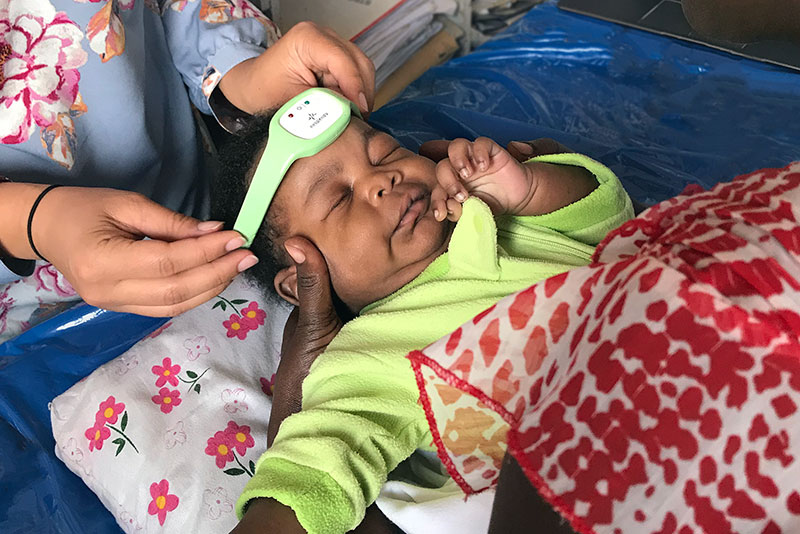Neopenda, a Chicago-based health tech startup, has recently adapted its wearable neonatal vital signs monitor, to be used with pediatric and adult patients suffering from COVID-19.
neoGuard, the wearable device, wirelessly sends vital signs data, such as respiration rate, to a phone or tablet computer, allowing healthcare staff to monitor newborns on the move or remotely.
Neopenda’s device has so far been used to help reduce infant mortality in poor regions of the world, where it’s difficult to monitor newborns for potentially life-threatening conditions due to lack of healthcare staff and clinical resources, reports MedGadget.
“We had the unique opportunity to travel to Uganda to conduct a needs assessment, and found that there was such a scarcity of functional medical equipment in so many of the hospital wards – primarily because the commercially available products did not meet the design constraints of low-resource hospitals. After the trip, Teresa and I decided to start Neopenda to engineer medical devices for where they are needed most,” said Neopenda CEO and co-founder Sona Shah.

Now, the device has been modified so that it can measure vital signs in adults and children, with potential to help with the response to the COVID-19 pandemic.
“neoGuard is a continuous vital signs monitor that measures pulse rate, respiration rate, oxygen saturation, and temperature through a simple headband, Shah told MedGadget in an interview. The vitals from multiple patients are wirelessly transmitted over Bluetooth low energy to a centralized dashboard on a tablet. Our system helps overburdened healthcare workers better manage their patients, and improves speed of action for patients in distress. With just one tablet, nurses and clinicians can simultaneously observe up to 20 patients at a time and receive real-time audio and visual alerts if any of their vital signs exceed preset upper or lower limits. By detecting early warning scores for patients in distress, the neoGuard technology will help trigger more timely and effective clinical interventions and subsequently lower patient morbidity and mortality.












